Smuggler offer a wide range of RIBs both conventional and amphibious.
Soft Hulls to Hard Bottom RIBs
It’s more than 100 years since the first ‘pneumatic’ boat was launched in Germany. Practical and versatile, the inflatable was one of the twentieth century’s most significant small boat developments. While the earliest boats were soft bottom, with the advent of the rigid hull, the inflatable boat market took off.
Thirty or so years ago, if you lived in New Zealand and wanted an inflatable tender, you had to source one from overseas or purchase a cast-off from a visiting yachtsman. Like Hoover is to the vacuum cleaner and Xerox is to the copier, Zodiac was coined as the generic name for inflatable boats. And rightly so, as it was Zodiac that was the first to successfully establish a recreational RIB market.
The modern inflatable represents one of the world’s oldest boat-building technologies. The sight of bloated animal carcasses floating past in the flood season may have been what inspired some unrecorded scientific genius to invent an alternative technology.
Inflatables began as inflated animal hides proofed with tallow and sealed with tar or bitumen. The Phoenicians first left shore aboard them, and in 880 BC, an Assyrian army mass-produced inflatables to cross a river. But after reaching a development peak some 2,500 years ago, the technology became arrested due to a lack of alternative materials.
It wasn’t until the 19th century that the development of rubber coatings that made fabric waterproof offered a breakthrough. In 1846 a British expedition to the Arctic was accompanied by circular inflatable boats made by Macintosh, the firm founded by the inventor of the raincoat. Subsequent designs cropped up from time to time but were never developed until 1913. Albert Meyer in Germany developed a ‘pneumatic’ boat that was later used in small numbers by the German army and marketed commercially.
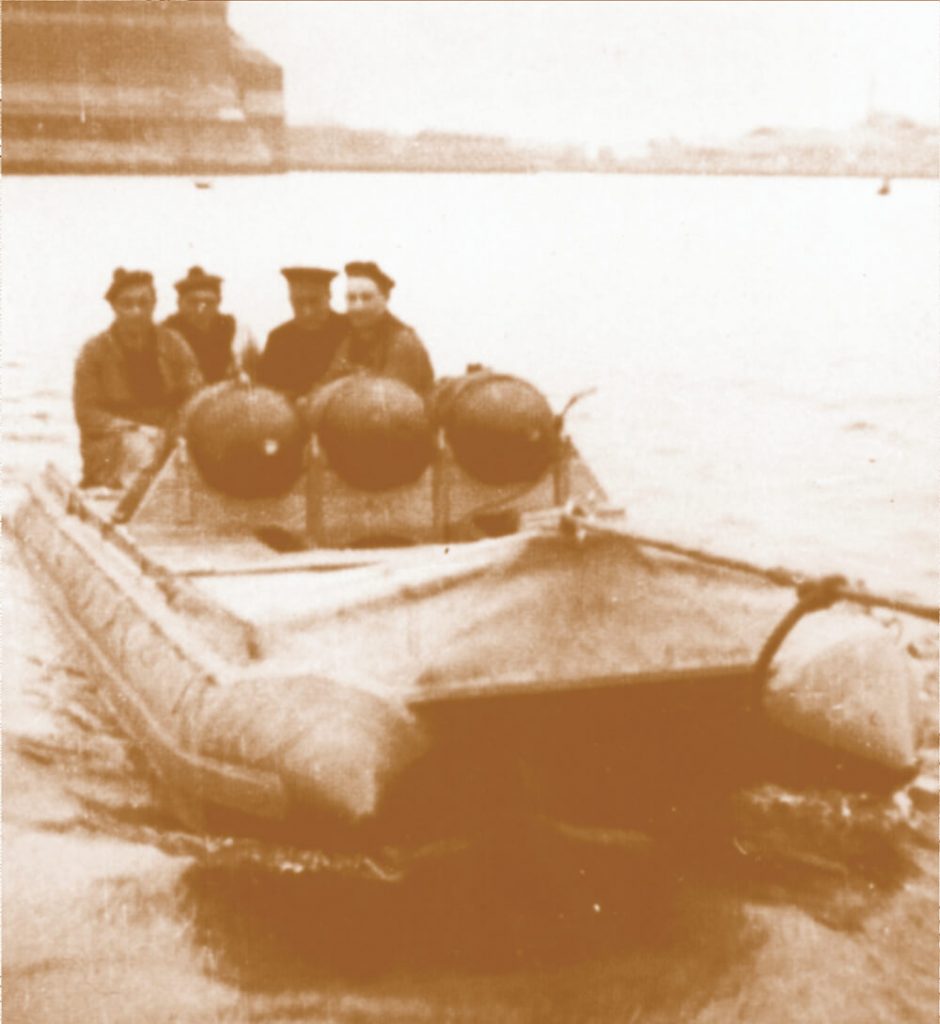
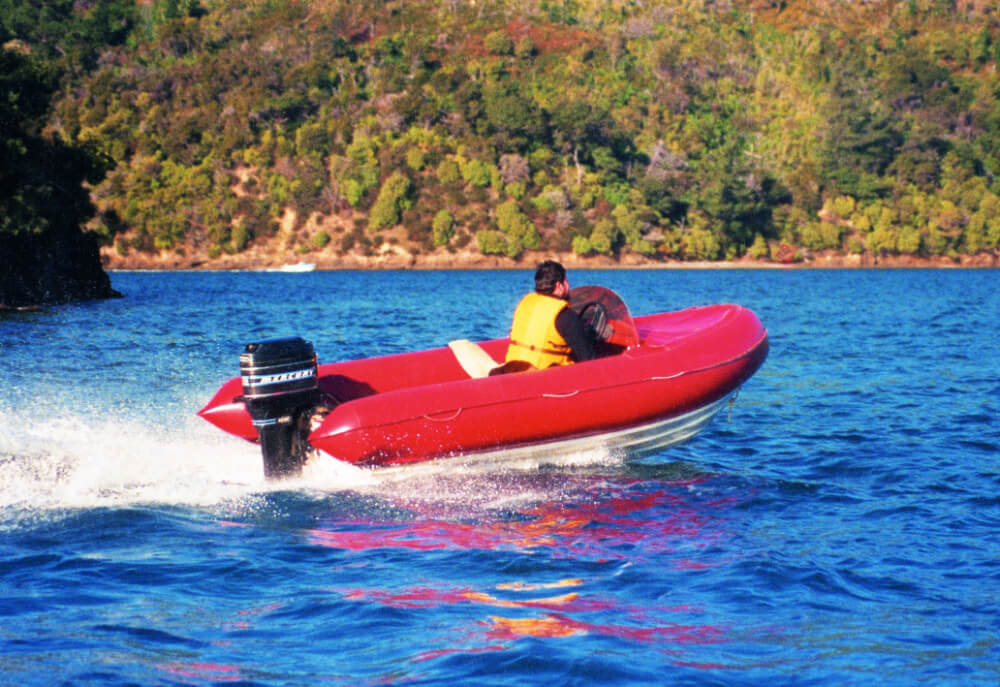
FROM LIGHTER-THAN-AIR TO LIGHTER-THAN-WATER
In 1896 in Paris an aeronaut called Maurice Mallet with two partners founded the Société Mallet, Mélandri et de Pitray, a venture to design and build airships. The company name is hardly one to resonate in the memory, which is why, when it began to manufacture the world’s first sporting and tourist balloons, the decision was made to market them under a somewhat catchier trade name, registered in 1909: Zodiac.
Zodiac is a significant name in the history of aviation and was very involved with the development of balloons and powered dirigibles, and made a name for itself producing small collapsible airships for private use. It also constructed France’s first rigid airship, the Spiess, which presented a grand spectacle with its 110-metre length and 12,000 cubic metre volume but didn’t go down well with the public because it looked too much like a Zeppelin.
During World War I, it built observation balloons, anti-submarine airships, and aircraft. Peace brought a downturn in orders, and Zodiac returned to basics, making nothing but sports balloons and airships for the French navy. Pierre Debroutelle was an engineer, aviator and aeronaut who had been with Zodiac designing airships and biplanes since 1909.
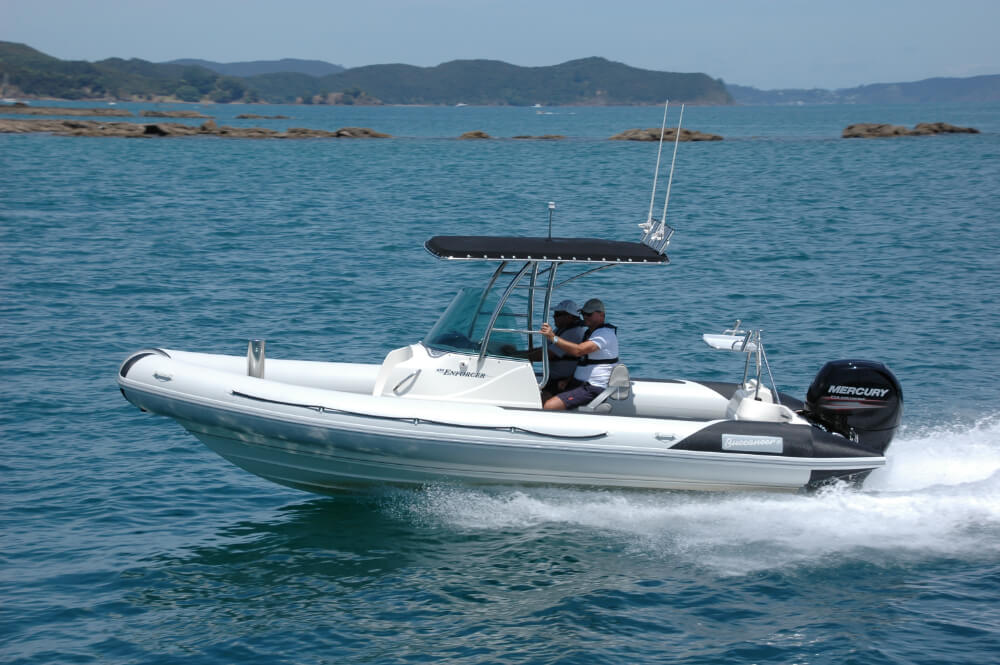
But he was also a keen duck hunter, and legend claims it was this that inspired him in 1934 to utilise his expertise in the use of airtight cloth and glueing techniques to design a two-person inflatable kayak. It consisted of two rubber-coated buoyancy tubes set parallel and joined by a layer of fabric on which sat the crew. He followed it in 1936 with a 3.6m catamaran of the same design, which sported a sail and central drop keel. The French navy followed the development of these prototypes with interest, and in 1937 asked Zodiac to solve a problem it had ferrying bombs and torpedoes out to its seaplanes. Debroutelle responded by mounting a pair of 4.5-metre floats at the edges of a wooden deck and joining them with a transom; et voilà!, Zodiac had its first orders for inflatable boats.
Then in 1940, Debroutelle launched his ‘A-type’ inflatable. A lateral float connected its parallel floats at the bow to form a ‘U’, while the transom was used to mount a 9-hp outboard motor. The modern inflatable was born.
Zodiac fell on hard times during World War II when the German army took over its premises, and production limited to barrage balloons and rubber clothing. Debroutelle continued experimenting in secret, but while Zodiac had inadvertently pioneered the modern inflatable, it remained known as a balloon manufacturer until after the war. On the other hand, several companies were already established as inflatable manufacturers during the 1930s.

Chemists made another significant contribution. Early inflatables used a cotton fabric base with a rubber coating, which deteriorated rapidly and wasn’t fuel resistant. But in 1931, Du Pont began marketing a new synthetic rubber under the brand name Neoprene, which with a nylon base offered both tear-resistance and durability. Neoprene remains in use to this day.
The affluent 1950s saw the rise of the ‘leisure society. For the first time, ordinary people had the time and money for recreation. Land-lubbers were going to sea in droves, which created a need for robust easy-to-handle boats. By 1965 Zodiac was exporting a third of its production, and RFD in Britain had become the first of many companies to manufacture Zodiacs under licence. Technical factors limited neoprene coatings to a colour range of black or grey, but the introduction of Hypalon enabled inflatables to be colour coordinated with the “psychedelic sixties”, giving them an irresistible social allure.
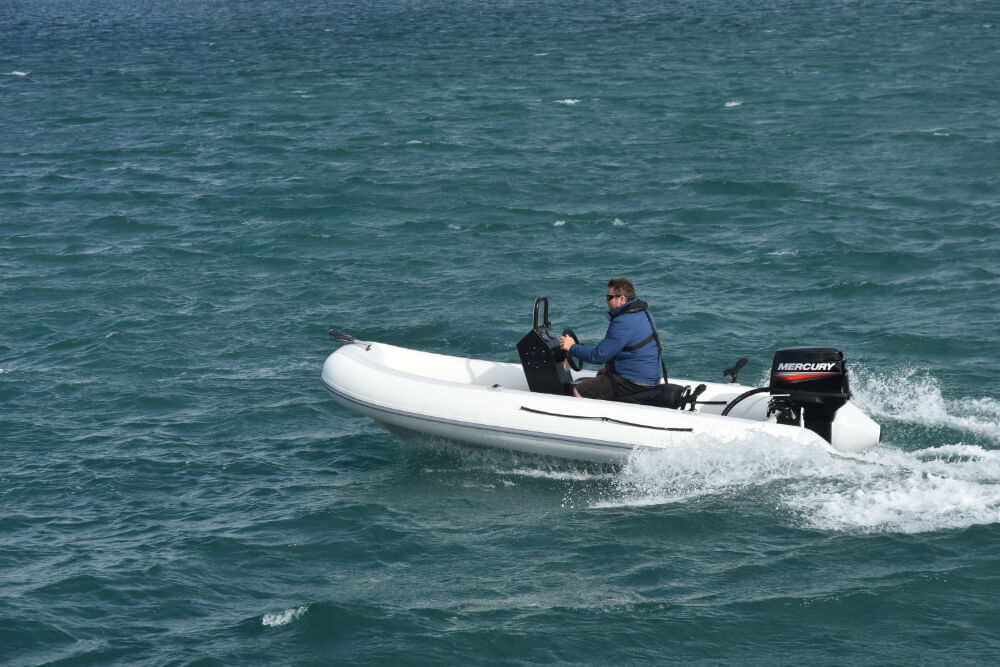
THE RIB ARRIVES
Meanwhile, the inflatable’s reputation as a ‘serious’ boat was enhanced in 1962 when the RNLI purchased Zodiac models built by RFD for sea rescue. Inflatables made superb lifeboats with their stability, buoyancy and ability to bump against other craft without damage. But they had a significant disadvantage: they were almost unmanageable at fast speeds in heavy seas.
The problem caught the attention of Rear Admiral D. J. Hoare, headmaster of Atlantic College, a British equivalent of the Outward Bound school. In 1963 he glued the tubes of an inflatable to a flat piece of ply with a small central fin. With a 20-hp motor, it promptly won a prize in a local powerboat race in weather so atrocious that conventional speedboats were breaking up or flooding. The RIB (Rigid Inflatable Boat) had arrived. With its seat-of-the-pants pioneering period over, the past 60 years have seen the perfecting of inflatable technology.
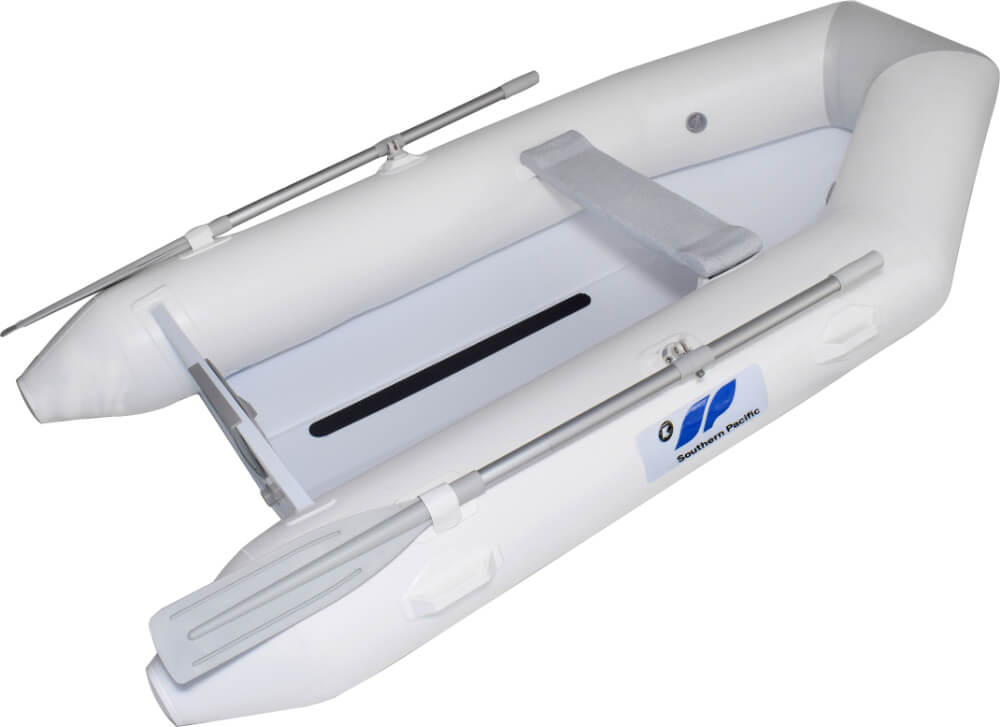
THE NEW ARRIVALS
The late 1970s saw a transatlantic gold rush as European inflatable manufacturers, particularly, and during the 1990s, the market went from strength to strength. Europe remained dominant in the industry, due mainly to Zodiac and its subsidiaries such as Avon.
The first known Kiwi inflatable was launched by Chris Marks in 1971 when he set up Lancer Industries. Lancer was purchased a few years ago by Sea Legs and are now essentially tube manufacturers. Naiad came along in the early 1980s and today are still very strong, especially in the commercial sector. With the recent sale of Naiad to an Australian company, most of the custom manufacturing is now done in Australia.
Rayglass, with its Protector range, has dominated the America’s Cup and yachting scene as well as Coast Guard rescue boats for many years and are one of the world leaders in cabin style RIBs. Smuggler Marine is fast gaining an international reputation for its luxury RIB tenders and, more recently, their range of amphibious RIBs. Their Strata range comprises close to 20 models from 4.9m to 11m in both the ‘wheelie’ and ‘non-wheelie’ version.
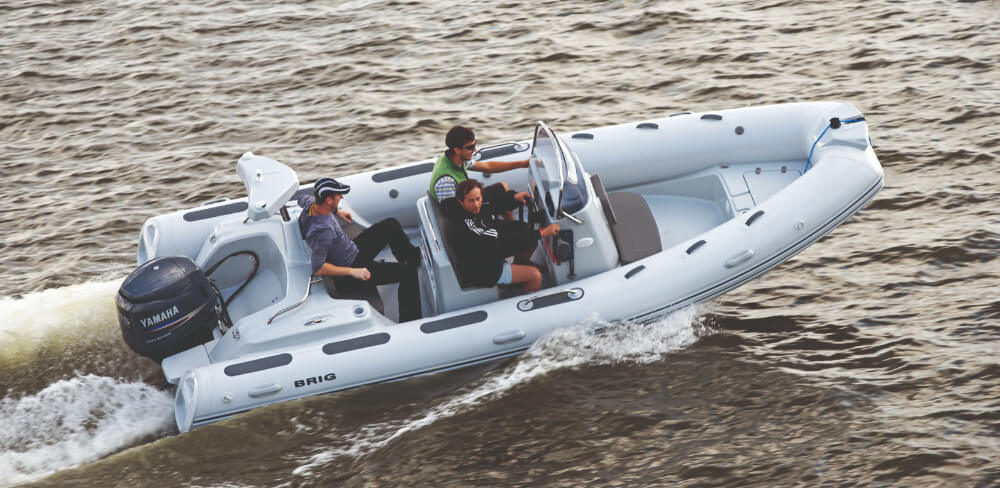
CHANGING MARKET
The market has changed massively over the past few years, and today there are hundreds of models from dozens of brands that you can buy in New Zealand or Australia.
New Zealand has developed a solid core of specialist builders of centre console and cabin RIBs. Smuggler, Southern Pacific, Explorer, Seafarer, Assault, Protector, and JP RIBS are just a few leading brands catering for the console and cabin RIB markets.
International brands as Brig, AB, Gemini, Highfield and Zodiac, are well established in the local market and compete favourably against locally built brands.
The market has also changed from the very basic RIBs used as workboats and the small open tenders for larger cruisers and yachts to some very sophisticated and interesting craft. Rayglass has established an enviable reputation with its Protector range of cabin boats. Rayglass, with its Protector range, has dominated the America’s Cup and yachting scene as well as Coast Guard rescue boats for many years and are one of the world leaders in cabin style RIBs.
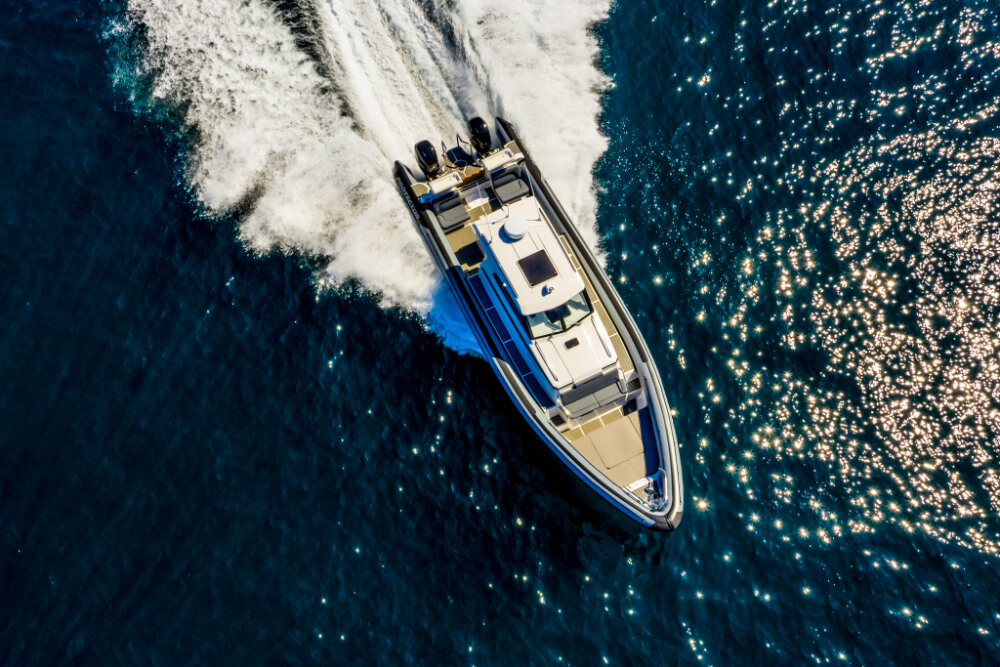
While the vast majority of RIBs are console or open, there is a growing number of cabin boats entering the market. Cabin models are also available from Kiwi brands, Smuggler, Assault, JP RIBS and Sea Legs. JP RIBS have taken bespoke RIB design and manufacture to a whole new level, with some exceptional custom models. When talking about RIBS, you have to include Sea Legs, a company that has revolutionised how we launch and retrieve our boats. Sea Legs have built over 1500 amphibious boats and exported them throughout the world. The only other local amphibious RIB built is Smuggler, who use the Orion system.
Jet powered tenders are one of the new trends, with speciality companies such as Williams catering for the big boat market but with no representation in New Zealand, the way has been left open for local RIB builders to enter the market. We have recently seen the emergence of console jetboat RIB tenders from Smuggler, Lamont (previously Explorer) and more recently, Southern Pacific.

MATERIAL CHANGES
A significant component of an inflatable is the fabric. Hulls will be either GRP or alloy. Fabric technology has significantly evolved in recent years and now includes plastomers, polyurethanes and other materials, which can sometimes be more robust, lighter, thinner and less expensive to assemble.
Fabrics used for a small tender don’t need to be the same as those for a large RIB because the intended use is not the same. Most fabrics consist of a strong, close-weave mesh of polyester or nylon material that is sandwiched between two coatings to provide extreme flexibility, superior air and water tightness, as well as resistance to abrasion and the sun’s UV rays.
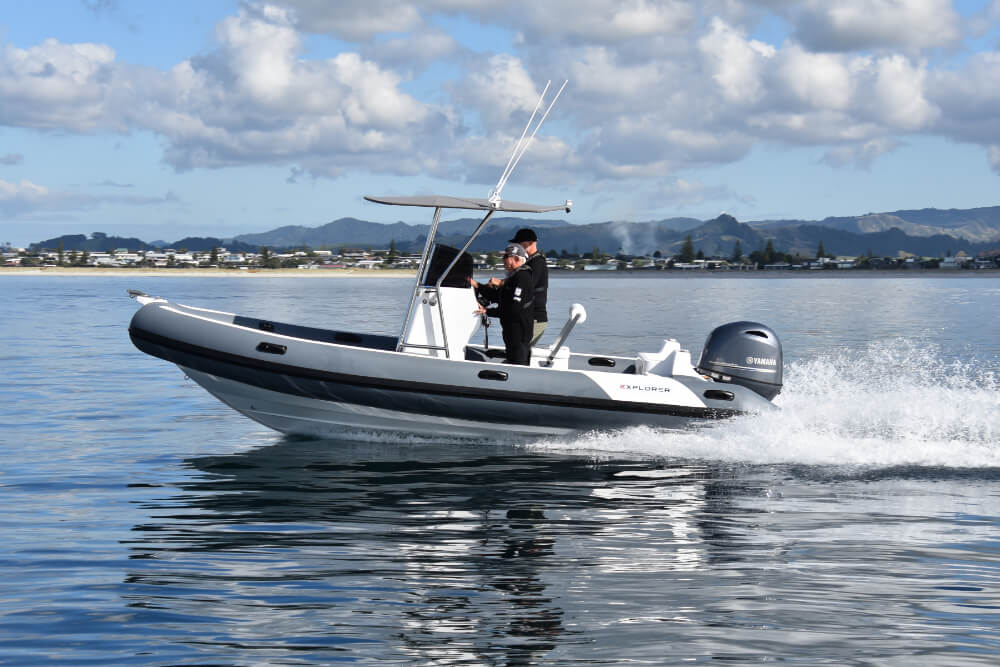
Inflatable boats have come a long way in the last 100 years, and technological development is destined to continue as designers and builders learn more about materials, construction and design.




